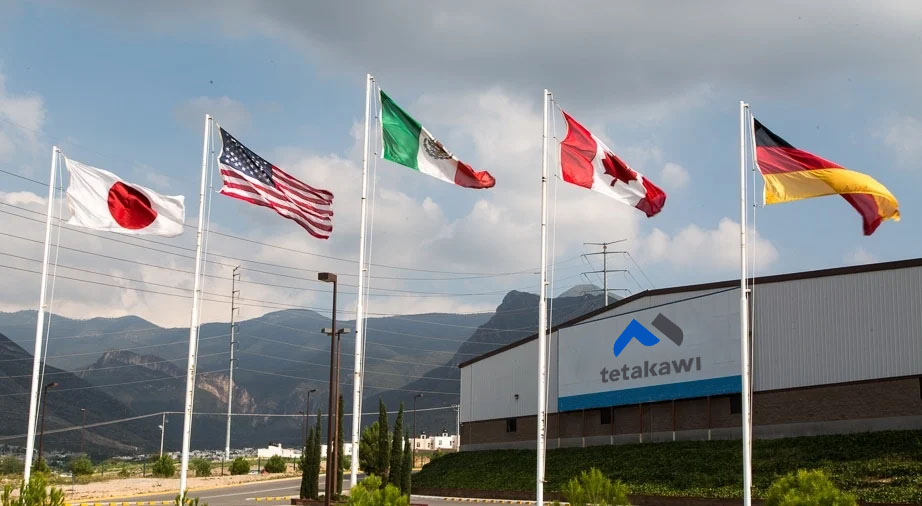Trade agreements in North America have played a pivotal role in shaping the economic landscape of the region. The North American Free Trade Agreement (NAFTA), established in 1994, was a landmark deal that removed trade barriers between the US, Canada, and Mexico, fostering increased investment and economic integration.
In 2018, the United States-Mexico-Canada Agreement (USMCA) was introduced to modernize and replace NAFTA, incorporating new policies that address technological advancements and labor regulations. USMCA aims to enhance free trade while ensuring fair labor practices and environmental protections.
Understanding these trade agreements in North America is essential for businesses looking to expand their operations and capitalize on the opportunities presented by a more interconnected and collaborative economic framework. This article is going to take a look at NAFTA versus USMCA since the differences can have a significant impact on businesses looking to expand into Mexico.
What Was NAFTA?
In the simplest terms, NAFTA referred to an agreement that was set up between the USA, Canada, and Mexico to facilitate free trade between these nations.
One of the main focuses of the agreement was to eliminate the existence of trade barriers between the three countries involved, helping to increase the investment opportunities available thanks to the increase of trade opportunities and the reduction of tariffs.
The agreement had a positive impact on a number of sectors, including the auto industry, textiles, and agriculture.
What Is USMCA?
In 2018, then-President Donald Trump proposed the implementation of a new agreement, known as the United States-Mexico-Canada Agreement, to update NAFTA.
The goal was to create a trade agreement that balanced free-flow trade dependent business groups with labor groups who would typically be opposed to this type of agreement.
There was also an aim to increase the speed of processes, continue tariff-free environments, update legislation surrounding jobs and digital technology, and increase the length of intellectual property agreements.
What Are The Differences Between NAFTA And USMCA?
So just what are the differences between NAFTA and USMCA? The good news is that a number of elements remained essentially the same but with slight, subtle improvements.
A number of industries are impacted by the changes, and the new agreement has implications for those businesses planning to expand into Mexico. While the focus on removing tariffs remains, some industries will experience changes, and these include:
-
Biologic Drugs
Under USMCA, protections surrounding the development of biologic drugs have been removed, to help improve the pricing and profit of these substances. Pharmaceutical companies also now have the right to retain patents on biologic drugs for a minimum of ten years, compared to the eight years offered by NAFTA.
-
Auto Manufacturing
Automobiles are a major import from Mexico. While NAFTA stated that the total North American content of a vehicle must equal 62.5%, USMCA has increased this requirement to 75%. In addition, 80% of all aluminum, steel, and glass involved in the production are legally required to come from North America.
-
Labor Laws
USMCA has also worked to strengthen labor laws and create more job availability in the USA and Canada rather than in Mexico. The agreement also seeks to protect worker’s rights in factories, and across the manufacturing industry in Mexico.
-
Environmental Policies
NAFTA saw the addition of the North American Agreement on Environmental Cooperation. It was intended to enforce new policies on the preservation and protection of the environment. USMCA seeks to maintain these policies, though there has been some concern that an adjustment in investor-state dispute resolution could have a negative impact on the environment and be bad news for existing policies.
-
Dairy Farmers
USMCA has worked to strengthen agricultural deals between the US and Canada, increasing Canadian access to American eggs, poultry and dairy products, while increasing the US access to Canadian peanuts and sugar.
-
Copyright
USMCA updates copyright laws, increasing the terms of copyright and intellectual property to 70 years from the original 50. Stricter penalties and rules prohibiting the theft of satellite or cable signals have also been included in the updated agreement.
-
Digital Material
One of the major factors of USMCA was to take into account the increase in technology and digital media since the creation of NAFTA. This removed the requirement from Canada and Mexico that US based businesses must store client and customer data on servers located within the USA, as well as stating that these businesses are also safe from being sued with regards to any content appearing on websites across Mexico or Canada.
Summary
While both NAFTA and USMCA serve to further the smooth flow of trade between the three major North American countries, there are key differences between the two, with USMCA being a more updated trade agreement that takes into account the changing state of the world, such as advances in technology. That’s why having an understanding of both NAFTA and USMCA is key if you’re planning on expanding your business beyond the borders of a single country.
Subscribe
Sign up and stay informed with tips, updates, and best practices for manufacturing in Mexico.





